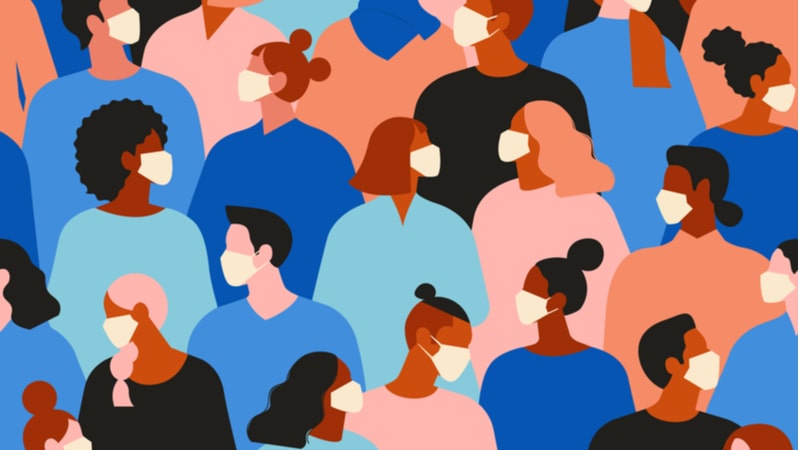
The National Institute of Standards and Technology (NIST) launched an investigation to see how well facial recognition algorithms could identify people wearing face masks and found that it does so with “great difficulty.”
The results of the investigation were published in a NIST Interagency Report (NISTIR 8311) and studied 89 commercial facial recognition algorithms. Of those tested algorithms, it found error rates between five and 50 percent in matching a photo of a person without a face mask to a photo of that same person with a digitally applied face mask. This matching of one photo to a different photo of the same person is one-to-one matching—commonly used to unlock smartphones—as opposed to one-to-many matching which tests one photo to a database of known images. The research team exclusively studied one-to-one matching with six million photos and did not test the algorithms’ ability to perform one-to-many matching.
“We can draw a few broad conclusions from the results, but there are caveats,” NIST computer scientist and an author of the report Mei Ngan said. “None of these algorithms were designed to handle face masks, and the masks we used are digital creations, not the real thing.”
Ngan suggests that a few general lessons can be learned when keeping those limitations in mind, such as:
- Algorithm accuracy with masked faces declined substantially across the board;
- Masked images more frequently caused algorithms to be unable to process a face;
- An algorithm’s accuracy lowers the more of the nose the mask covers;
- While false negatives increased, false positives remained stable or modestly declined; and
- The shape and color of the mask mattered, seeing lower algorithm errors with round masks.
